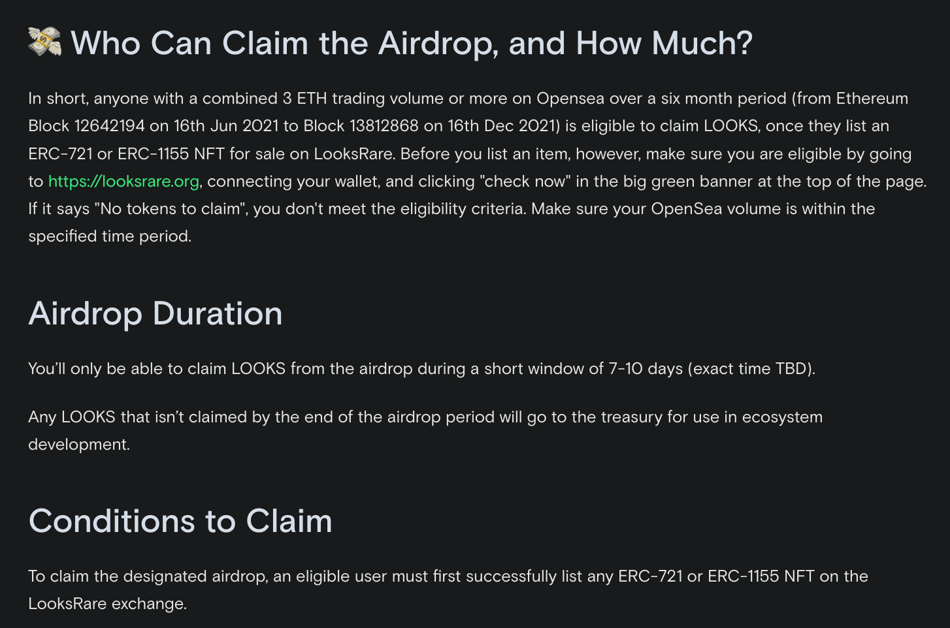Detailed Explanation of Vampire Attacks: Taking Sushiswap and Uniswap, LooksRare and OpenSea as Examples of "Frenemies"
Author: TokenInsight
Definition of Vampire Attack
The concept of "vampire attack" in the crypto market is quite simple. It refers to an attacker creating a protocol that is the same as or similar to the target protocol, while offering more profitable and attractive incentive mechanisms to lure the target's market share or users to their side, essentially "sucking" them away.
Let's further understand this concept through two examples.
SushiSwap vs Uniswap
SushiSwap can be considered the first and most famous "vampire" in the crypto market, targeting Uniswap.
Weaknesses of Uniswap
Uniswap is an open-source AMM decentralized exchange. During the DeFi Summer of 2020, Uniswap enjoyed the benefits brought by the market, with its TVL growing from $70 million in June to $300 million by the end of August, becoming a leading player in the DEX space, thanks to the launch of its V2 version.
However, there were hidden dangers on Uniswap's development path—at that time, it had not released a governance token and did not change its incentive mechanism as the platform grew (the only reward for liquidity providers was trading fees), which was undoubtedly a major weakness of the platform. Liquidity providers supported the platform's operation and bore impermanent loss but could not gain more rewards as the platform rapidly grew. At this time, the developer, anonymously known as "Chef Nomi" (Chef Nomi), seized this weakness.
Innovations of SushiSwap
Nomi established SushiSwap, which is essentially a simple fork of Uniswap. Notably, SushiSwap introduced a very key new feature: the combination of the platform's governance token (SUSHI) and liquidity staking rewards.
As a governance token, SUSHI also has the characteristics of a platform token. In SushiSwap, 0.25% of the trading fees in the pool are directly allocated to active liquidity providers, while 0.05% is converted into SUSHI and distributed to SUSHI holders (essentially a form of buyback). This means that liquidity providers can not only earn a share of the platform's trading fees but also receive token rewards.
The key point is that SushiSwap stipulates that SUSHI will only be rewarded to users providing liquidity in the form of Uniswap LP tokens. In other words, this is aimed at attracting Uniswap users to participate in SUSHI mining.
The "Sucking" Process
SushiSwap's staking contract and SUSHI distribution began on August 28, 2020, with very aggressive initial rewards, with an initial rate as high as 1000% annual interest. Under such incentives, users rushed to Uniswap to deposit assets into eligible pools (including 13 pools such as USDC/ETH, SUSHI/ETH, etc.) to obtain Uniswap V2 LP tokens, which were then quickly deposited into the SushiSwap contract.
After 100,000 blocks (about two weeks), SushiSwap initiated liquidity migration, transferring all Uniswap LP tokens to SushiSwap and exchanging them for the corresponding token pairs on Uniswap, and then using the tokens to initialize new SushiSwap liquidity pools. By the end of the migration, SushiSwap had accumulated about $800 million in tokens, accounting for approximately 55% of Uniswap's liquidity at that time, while Uniswap's TVL plummeted by about $400 million.
Looking back at the events, SushiSwap created an image of being "based on Uniswap but higher than Uniswap" by forking Uniswap's architecture and introducing a new reward mechanism, incentivizing users to transfer funds to SushiSwap. Although Uniswap ultimately weathered the storm and launched its own token UNI, SushiSwap was still successful, rapidly accumulating a large amount of liquidity through its sucking strategy and entering the ranks of top DEXs.
LooksRare vs OpenSea
At the beginning of last year, a vampire attack also occurred in the NFT market, initiated by LooksRare against OpenSea.
Weaknesses of OpenSea
OpenSea is a comprehensive NFT trading platform where users can buy and sell various forms of NFTs, including crypto artworks, game items, virtual real estate, domain names, and financial products. The platform supports NFTs in ERC-721 and ERC-1155 formats. The secondary trading fee on the platform is 2.5%, while primary minting can be as high as 10%.
As the oligarch of NFT trading platforms, OpenSea holds a significant market share but has also received many negative reviews from users, including inconsistent payment methods (users often need to convert ETH and WETH to complete different types of purchases), high fees, and most importantly, a centralized organizational structure that heavily relies on traditional capital, lacking decentralization and Web 3.0 characteristics.
Innovations of LooksRare
LooksRare launched in January 2022 and is also an NFT trading platform. It learned from OpenSea's experience and made some innovations, including:
Allowing mixed payment options of ETH and WETH. On the LooksRare platform, both can be used for bidding and payments;
Supporting series bidding. This design optimizes the buyer experience for those who care about NFT series themes rather than the specific details of each piece, as they do not need to list each one individually;
Most importantly, an upgrade to the fee and incentive mechanism. LooksRare charges a 2% fee on all transactions and distributes this fee income to stakers of the LooksRare native token. The platform aims to challenge OpenSea's dominance in the NFT space by distributing fees to the community.
Does this operation sound familiar? This is the core idea of the vampire strategy: targeting the weaknesses of a leading project and addressing them to better attract and retain users.
The "Sucking" Process
The specific sucking process of LooksRare is even more straightforward and aggressive.
It used a system filter to identify major NFT traders on OpenSea (those with a cumulative trading volume of over 3 ETH in the past six months) and directly added these traders to its native token LOOKS airdrop whitelist—however, if these traders want to claim LOOKS, they must first trade 1 NFT on LooksRare.

This sucking method directly transformed many OpenSea users into LooksRare traders, causing LooksRare's market value to soar to $1 billion, with the price of LOOKS rising to around $7, peaking at $7.1.
Conclusion
For project teams, vampire attacks are akin to a devastating blow, bringing volatility risks to the market; however, from the perspective of the entire crypto market, such sharp confrontations between projects may be a good thing—it has sparked competition among projects. In this regard, vampire attacks not only enhance the possibility of improving user experience but also help mitigate the market centralization risks posed by oligarchic projects monopolizing users and market share.











